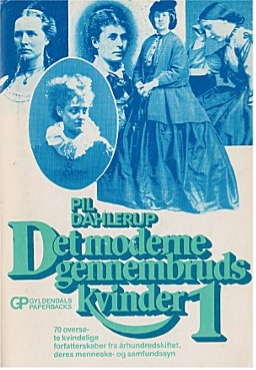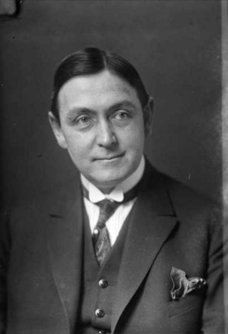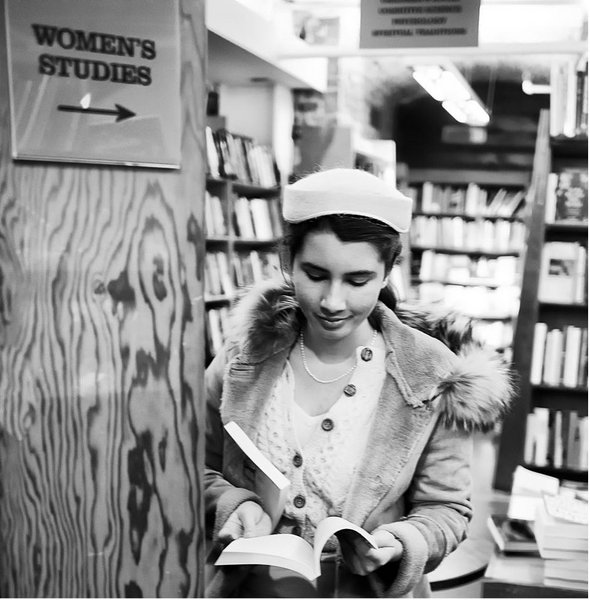Literary criticism in the Nordics, postwar to today
Literary work and issues pertaining to it were rooted in the historical-biographical tradition following the Second World War in the Nordics. Danish linguist Louis Hjelmslev's work helped paved the way for structuralism which came to prominence in the 1960s, when the wider debate on the role of literature in education and society also began to grow. Theory and method were central to this debate, as were the introduction of a wealth of innovative approaches to literature, including Marxism and feminist literary criticism. Poststructuralism and deconstruction developed thereafter. All of these waves arguably lay the foundation for the literary criticism we are familiar with today in the Nordic countries, namely, a subject area that is eclectic and wide-ranging.

The historical-biographical tradition
Literary criticism in the Nordic countries in the first decades after the Second World War was firmly rooted in a historical, empirical tradition. Literary criticism is defined by the Encyclopedia Britannica as ‘the reasoned consideration of literary works and issues’ and was often synonymous with research into the work of an individual author, with every scrap of material having to be taken into account and the literary work/s interpreted in biographical and usually also comparative contexts. The resulting study, often a doctoral dissertation, was effectively an example of life-and-letters. The tradition was particularly strong in Sweden, maintained by the disciples of Henrik Schück (1855-1947). A leading representative of the equivalent tradition in Norway was Francis Bull (1887-1974). Literary criticism in Denmark was also strongly influenced by the historical-biographical tradition.
In this climate, new methods and theories did not gain acceptance easily. New criticism, from the USA and Britain, had attracted some attention as early as the 1930s, but the first book-length introduction, the Danish scholar Johan Fjord Jensen’s Den ny kritik (New Criticism), only appeared in 1962, with a Swedish version published in 1964. In the Nordic countries approaches inspired by New Criticism were frequently combined with traditional historical-biographical methods.

PICTURE: Portrait of Francis Bull in 1925 (4 October 1887 – 4 July 1974) who was a Norwegian literary historian, Professor at the University of Oslo for more than 30 years, essayist and speaker, as well as a magazine editor. Photo: Wikimedia Commons (CC BY-SA 4.0)
Structuralism onwards
The Danish linguist Louis Hjelmslev’s (1899-1965) work on structural linguistics in the 1920s, 30s and 40s (which was also to influence the post/structuralism of Roland Barthes) contributed to paving the way for structuralism, which began to come to prominence in literary criticism in Denmark in the 1960s. Structuralism had a limited impact in Norway but was of greater significance in Finland, with Aatos Ojala as one of the leading figures. The publication in Sweden in 1966 of a volume presenting the application of quantitative methods - inspired by the social sciences - in the study of literature, was an indication of the problematisation of the study of literature and of relevant theories and methods that was to become increasingly prominent throughout the Nordic countries from the late 1960s onwards.
Discussions raged about the role of literature in the school systems, in higher education, and in society as a whole, with new groups of young scholars, sometimes functioning as collectives and sometimes working outside academia, often presenting their findings to wider audiences and so enhancing the debate. Theory and method were central to this debate, fundamental to which was the introduction of a wealth of innovative approaches to literature, including feminist literary criticism, Marxism and, in due course, poststructuralism and deconstruction.
Feminist literary criticism
The Dane Pil Dahlerup’s magisterial Det moderns gennembruds kvinder (1983) (The Women of the Modern Breakthrough) is a major example of feminist literary criticism, with Dahlerup developing a feminist structuralist analysis to explore the œuvres of the many Danish women writers who were part of the Modern Breakthrough in Scandinavian literature from the 1880s onwards - but who, in a famous study published by the critic Georg Brandes (1842-1927) a century earlier, had been utterly ignored. The retrieval and analysis of forgotten works by women writers was a key project of feminist literary criticism from the 1970s onwards, the most significant result in the Nordic countries being Nordisk kvindelitteraturhistorie , which is now also available electronically and in English translation (www.nordicwomensliterature.net).
 PICTURE: A woman standing in Women's studies section at the library. Photo: Christopher Michel (CC-BY 2.0)
PICTURE: A woman standing in Women's studies section at the library. Photo: Christopher Michel (CC-BY 2.0)
Kurt Aspelin from Sweden was a Marxist critic much of whose work focused on the Romantic writer C. J. L. Almquist, but he also made a huge contribution in the 1970s with books presenting a range of approaches to literature: Marxist, structuralist, sociological, semiotic, and so on. Neo-Marxist literary criticism also became significant in Norway, where it had one of its roots in the Profil group, and it also flourished in Denmark.
Atle Kittang from Norway studied French modernism, writing his doctoral dissertation on Rimbaud, and subsequently established himself as a major introducer of new approaches and trends in Norway, including poststructuralism, deconstruction and semiotics. Kittang also renewed the psychoanalytical approach to literature, notably in his study of Knut Hamsun (1984).
Twenty-first century
Early in the twenty-first century, literary criticism in the Nordic countries was eclectic and wide-ranging, especially in comparison with the narrowness that prevailed for several decades after 1945, with poststructuralism and deconstruction, aspects of feminism and queer, and intermediality being some of the prominent trends. The work of Anders Olsson and Horace Engdahl, on modernist and Romantic poetry respectively, illustrates poststructuralist and deconstructionist approaches. The study of feminism and gender in literature has been enhanced by the establishment of centres of women’s studies/gender studies at a number of universities in the Nordic countries and the scholarship ranges very widely. Scholars such as Anne-Marie Mai (Denmark), Unni Langås (Norway), Ebba Witt-Brattström (Sweden) and Lisbeth Larsson (Sweden) were all involved in editing Nordisk kvindelitteraturhistorie (History of Nordic Women Writers) but have also published research on e.g. constructions of the body, women modernists such as Moa Martinson and Edith Södergran, and biographical writing. Tiina Rosenberg, a theatre scholar from Finland who is active in both Sweden and Finland, is a leading representative of queer studies. Intermediality, about the relationships between texts and images of different types, has been explored by, for example, Ulla-Britta Lagerroth and others at Lund University. Children’s literature has been particularly strong in Sweden thanks to scholars such as Vivi Edström and Maria Nikolajeva, the latter employing structuralism and narratology for the analysis of children’s literature.
This article has been published posthumously.
Further reading:
- Staffan Bergsten (ed.), Litteraturvetenskap – en inledning. [An introduction to literary studies] 2nd ed., (Lund: Studentlitteratur, 2002).
- Atle Kittang, Møtestader. Utvalde artiklar om litteratur og litteraturteori, (Oslo: Det Norske Samlaget, 1988)
- Harald S. Næss, ed., A History of Norwegian Literature (Lincoln & London: University of Nebraska Press, 1993).
- Sven H. Rossel (ed.), A History of Danish Literature (Lincoln & London: University of Nebraska Press, 1992).